Today we’re sharing another 10 photographers who choose their strongest photographs and tell us what it is exactly that brings them back to using film, time and time again.
Plus, you only have a few days to enter the Intrepid Film Photography Award. The Intrepid Camera Co. is a young start-up enabling a new generation of photographers of all kinds to put down their digital cameras and embrace the world of film with their affordable large-format cameras.
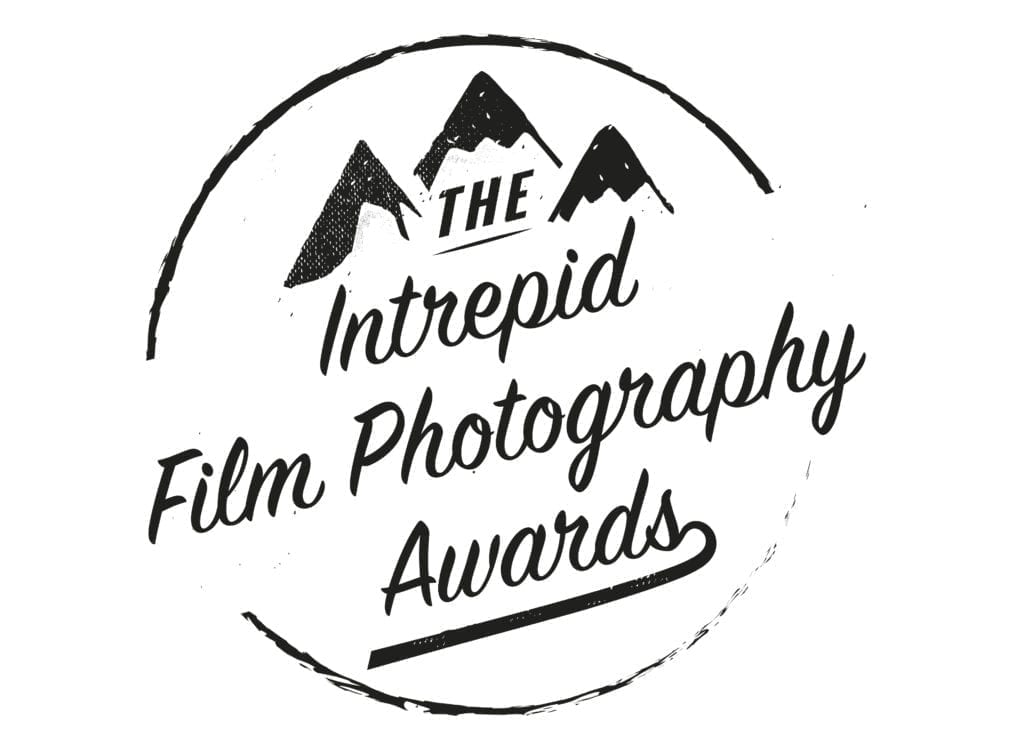
Scroll down to the bottom of the article to find out how to submit to the competition and win one of Intrepid’s large-format cameras – it’s free to enter and only open until Sunday 11 June, so don’t miss out!
Kamil Śleszyński
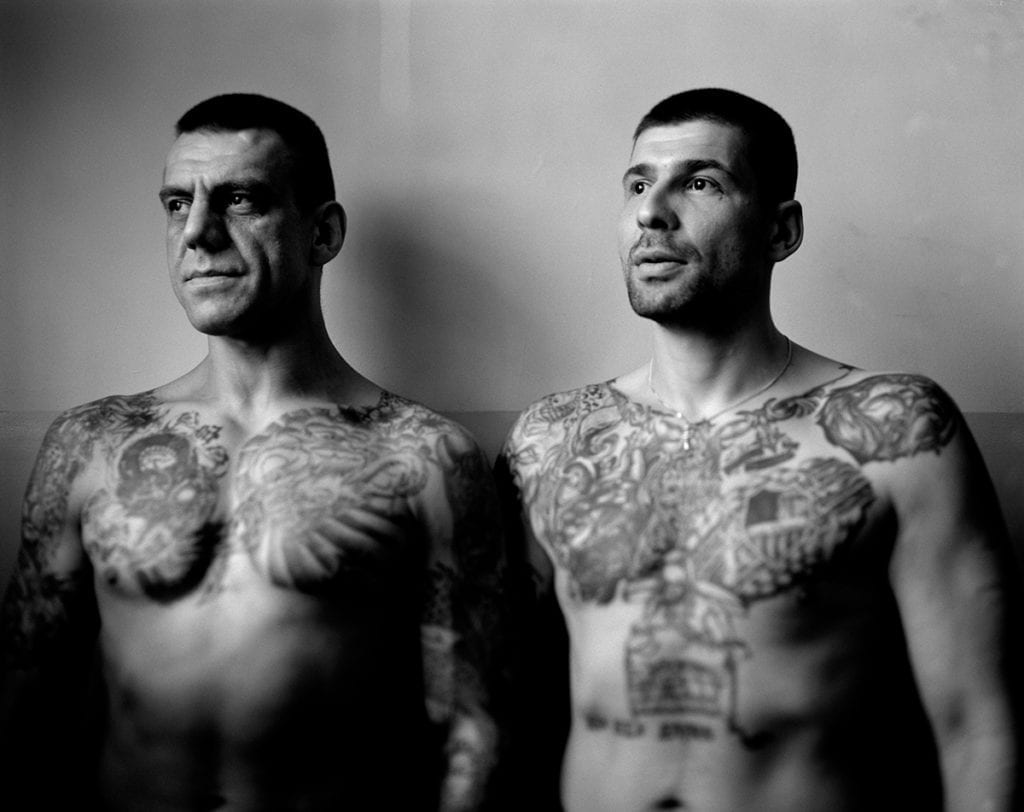
I’m a former postman, Bulgarian forklift operator and autodidact documentary photographer. I live in Bialystok, Poland, where I work on long-term projects focusing on complex relationships between people.
The Image
This photo was taken in the Polish detention center where I was working on a documentary project about prisoners. It is one of the better frames I have made, because it was towards the end of my work.
Gaining the confidence of prisoners took a long time, and this was a key issue for the project. Prisoners are, understandably, distrustful – they’re afraid that someone from the outside will ridicule or deceive them.
One of the prisoners told me that he did not want to work with me because prisoners are not monkeys in a cage. I spent a lot of time trying to convince him that I would not misrepresent him. In the end, he became so involved in the project that he convinced other prisoners to cooperate with me.
Why Film?
I photograph on film because it determines a certain way of working.
I often photograph with a large-format camera, and I liked using it for this work because it interested many of the people I photographed – as did the old style photographic techniques I needed to carry out to operate the camera.
They had never seen such equipment before and it was a new experience for them – it really helps a lot and lessens the distance and unfamiliarity. On the other hand, I had a limited number of shots which made me have to concentrate and focus more on what I was doing. However, there are situations where photographing on film is difficult or impossible. That’s when I reach for a digital camera and I have no problem with that.
Barnaby Kent
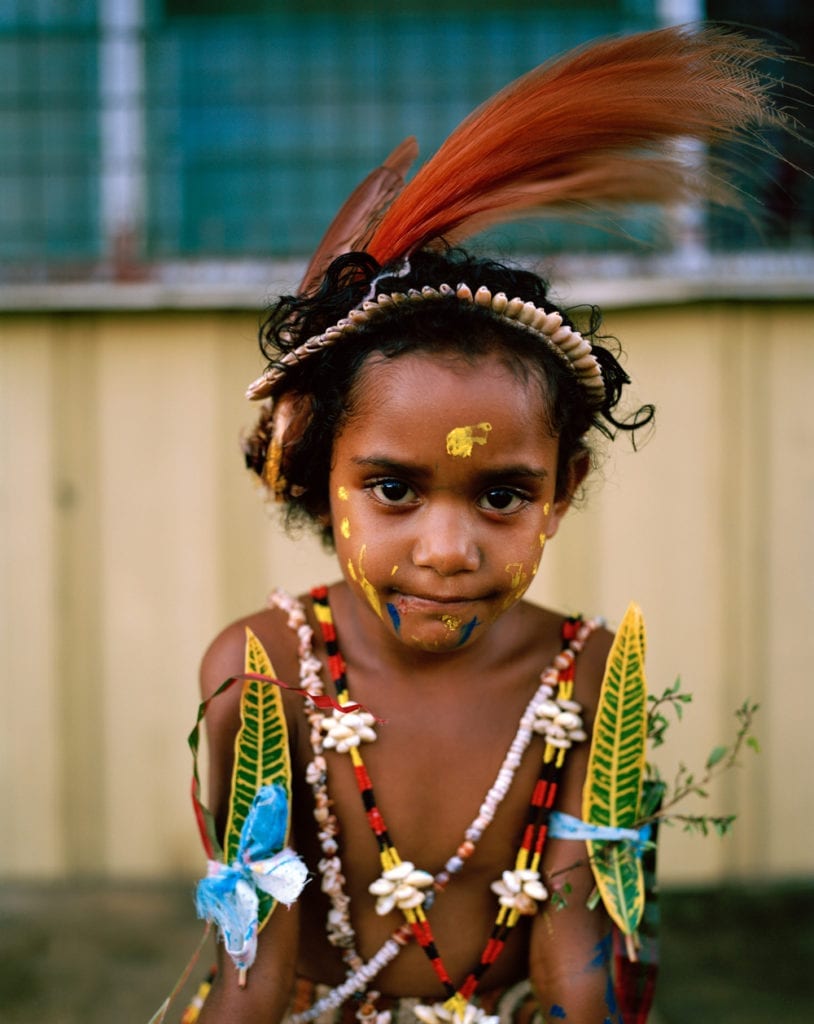
My photographic practice is based around notions of travel and documentary, exploring landscapes and telling the stories of the people who live in them.
The Image
I chose this portrait of Angelica because it is from my first project shot on large format film, taken in Papua New Guinea in 2014. The photograph is of Angelica in ceremonial dress for an upcoming Sing-Sing (a gathering of tribes to peacefully share and show their distinct traditions.) The portrait is one of my favourite images from the project because of the richness of colour in the red of the bird of paradise feathers in her headdress in contrast with her deep black eyes.
Why Film?
I work with film primarily for the process – the way it makes you slow down your practice, and makes you really think through every single exposure. I love the depth of colour and tone you achieve with film, and the experience and tangibility of the medium, whether that’s processing, scanning or printing. It is only beneficial to you, refining your practice. There is also something very special about how viewing through ground glass can somehow make anything become more beautiful.
Adama Jalloh
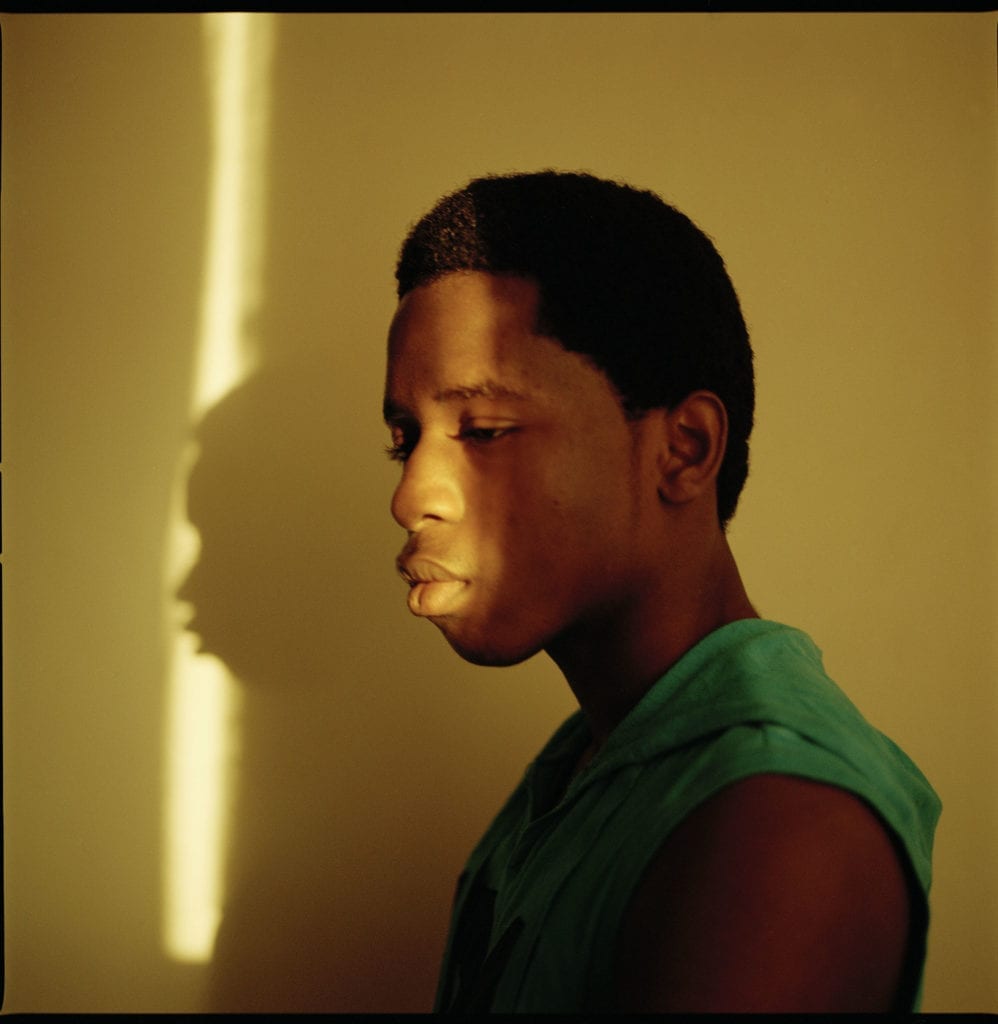
I am a freelance photographer, born and raised in London. My work revolves around race, culture and identity, and the photographs I take are mostly a result of what and who I gravitate towards and what I am surrounded by.
The Image
I chose this image because it perfectly shows how I see my brother, Mohammed. He has pretty much been my test model since I started taking photographs, so it’s been interesting seeing the way he’s grown and how he’s currently trying to find himself as a teenager.
I do feel the moments I photograph him is when I actually get to really know what he is like as a person. He is definitely a sensitive soul and I think the warm tones helps to depict that.
Why Film?
It’s what I feel most comfortable shooting with. I used to shy away from it before because of the mistakes I would make, but now I don’t necessarily deem the mistakes with film as a negative. I like the idea of having to take my time with certain analogue cameras, especially when shooting portraits, because everything becomes a lot more personal. I’m now slowly trying to make sure I adjust to shooting on digital, just so it doesn’t feel completely alien to me – especially if I’m shooting a commission.
Marc Wilson
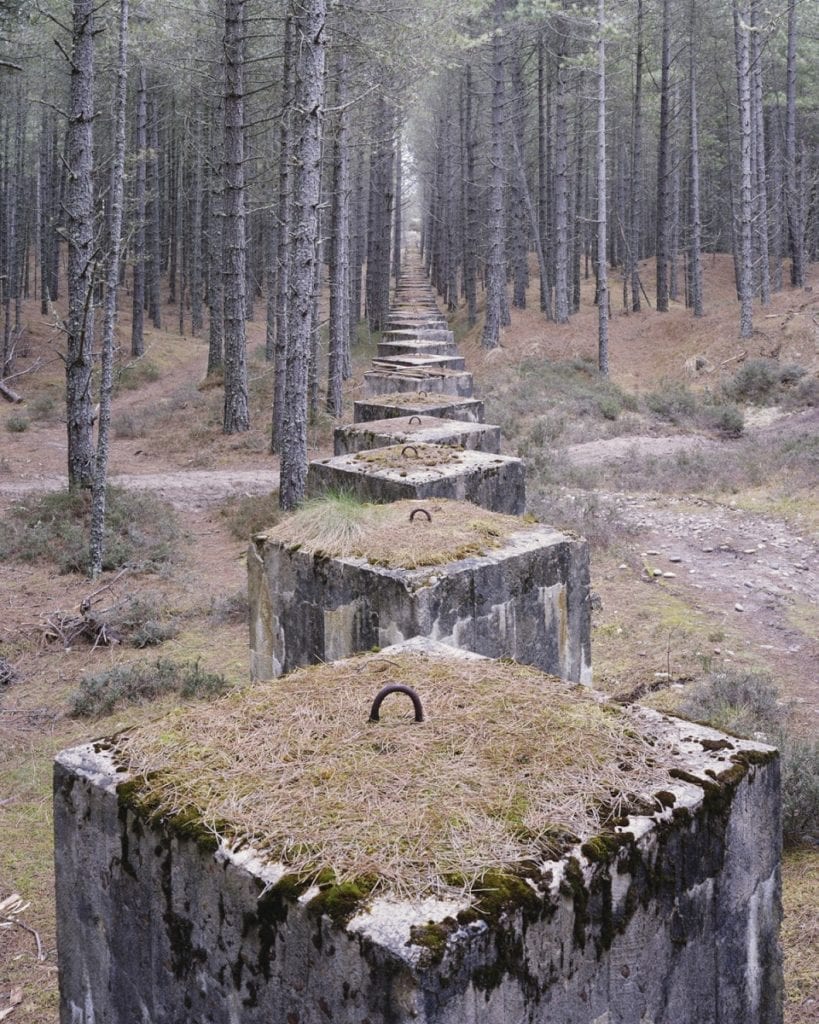
My photography is based around stories of memory and history in the landscape, combining document, landscape and portrait.
The Image
The image is taken from my series The Last Stand that documented some of the remaining coastal military defences of Northern Europe.
Why Film?
The Last Stand was shot on film using a large format 5×4 camera. This camera was chosen specifically for this work as it gave me the essential movements I needed for this work combined with the large negative of 5×4 colour film.
The use of film was important for the soft and subtle tonality of the scenes I was photographing and the images I was making.
Jim Mortram
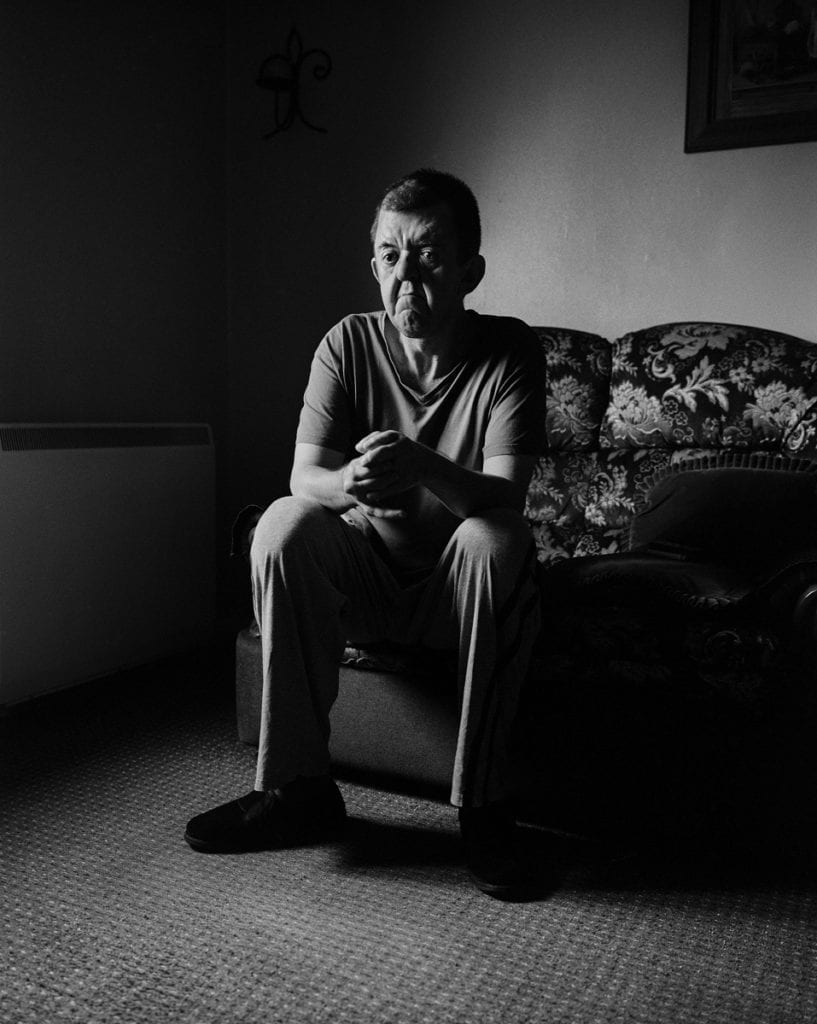
Working with my local community, I make long-form documentary stories and portraits to share their truths and testimony of life within a small town in the UK.
The Image
I’ve been working with Carl for over six years, listening to his thoughts on life and his accounts of a troubled past, survival of abuse and his battling demons to ultimately reach a place of well-being and confidence. It has been an incredibly humbling, inspiring journey. For years I had been trying to make this portrait, finally all the elements converged to permit its making: the light, Carl’s dignity, poise. 250th of a second and six years in the making.
Why Film?
Besides the aesthetic benefits, nothing works with light better than film. I embraced the craft, self-developing film has immersed me ever deeper within my process. The big draw is the intimacy and pace afforded by using film. It slows me down, makes every frame count, and the speed of working with film permits more talking and importantly, more listening. Working with film takes me ever closer to the person that I’m making a photograph with.
Rhombie Sandoval
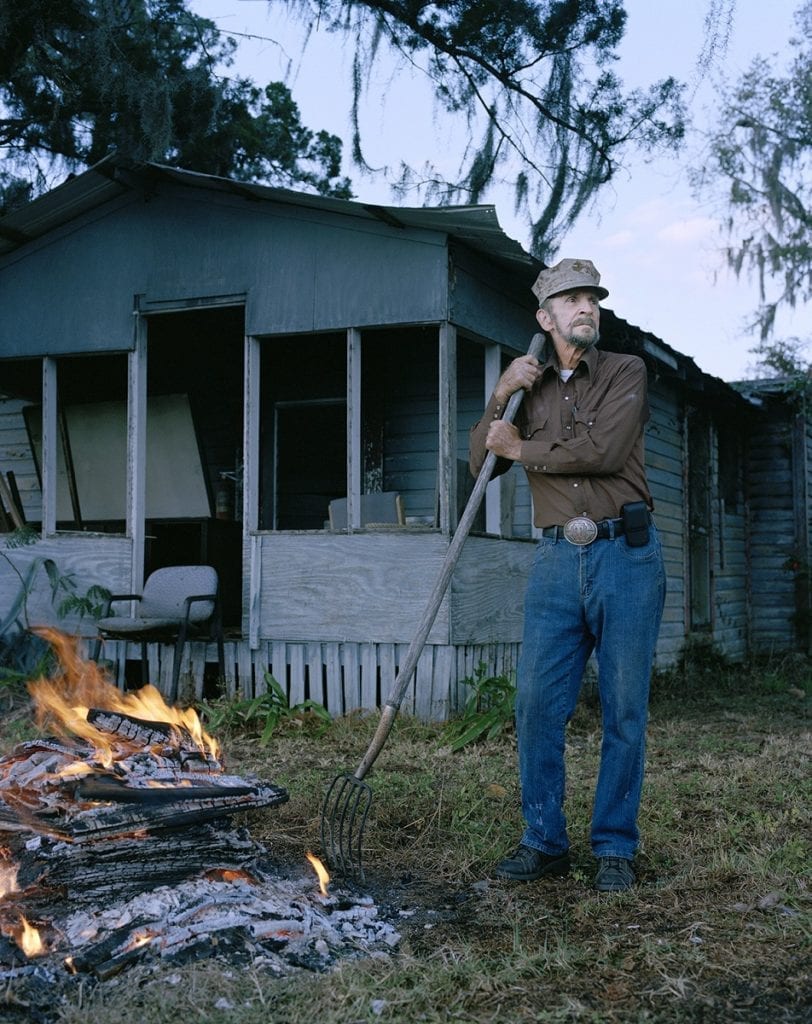
I am a photographer who places my desire to treat everyone as a teacher at the core of my photographs.
The Image
I chose this portrait of George because it was a turning point in my photography. As we drove past him, I had this feeling that if I didn’t attempt to make his portrait then I would never forget him standing in front of his home. Forcing myself to approach people can sometimes be intimidating. I observe people in a way that my fear of them saying no to a portrait is now not enough to stop me from asking. This picture is what I love about my camera – it allows me to stop, ask questions, and learn about someone else’s world.
I was driving through Florida when I saw George burning a couch outside his home. Everything about him made me curious. After I made his portrait he showed me the thrift shop attached to his home. We reached our destination late as we spent three hours learning about George. He told me his daughter would be upset because he won’t allow her to photograph him. I sent two copies of his portrait, one for him and one for his daughter.
Why Film?
The conversation that occurs while photographing my subjects is essential to creating their portrait. Film makes me slow down, which helps my subjects feel like they can take their time revealing their stories. My camera feels durable, it is an extension of myself. The way I have to hold my Mamiya feels like dancing. For me, film is more than just the material I use – it is a feeling.
I am attracted to film because it helps me pay attention to detail. With only 10 frames per roll I feel that each frame is an opportunity to tell a story. It has trained me to pay close attention to the details of my subject. It is an attention that they notice, and I find is often appreciated. I believe film helps me learn more about my subject than digital does. It allows for a connection.
Nathan Pearce
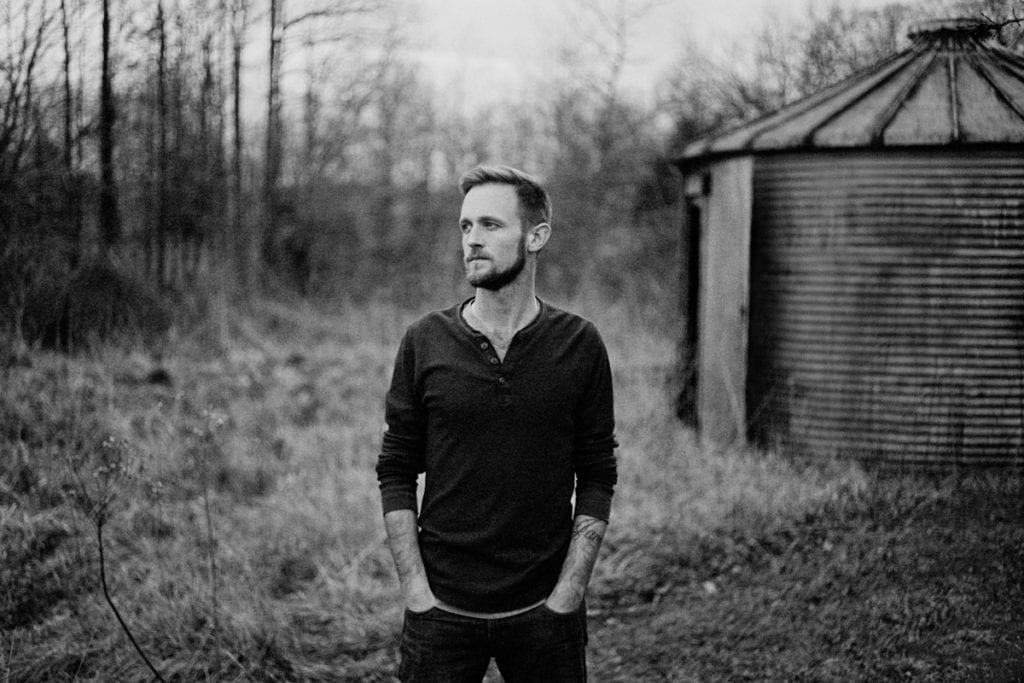
I am a photographer and book and zine-maker based in southern Illinois, USA.
The Image
I chose this image because it is very representative of my work. I photograph both the people and the landscape in the Midwestern United States. This portrait is of my cousin standing on the land where my great parents lived and which he now occupies.
Why Film?
When I first started taking up photography in a serious way, I exclusively used film and loved it. About 10 years ago my camera gear was stolen and with it all of my undeveloped film rolls. At that time I made the switch to digital.
About 4 years ago, though, I started to shoot film again a little and found that I was seriously missing it. I loved the way that it made me slow down and be more thoughtful about the pictures I was making. Now I have shot almost all of my personal work in the past year and a half with film. I have transitioned back to film.
I also like having an actual, physical thing to hold. It’s the same reason that I publish and collect zines; it’s nice when something exists off of the computer.
Harry Rose
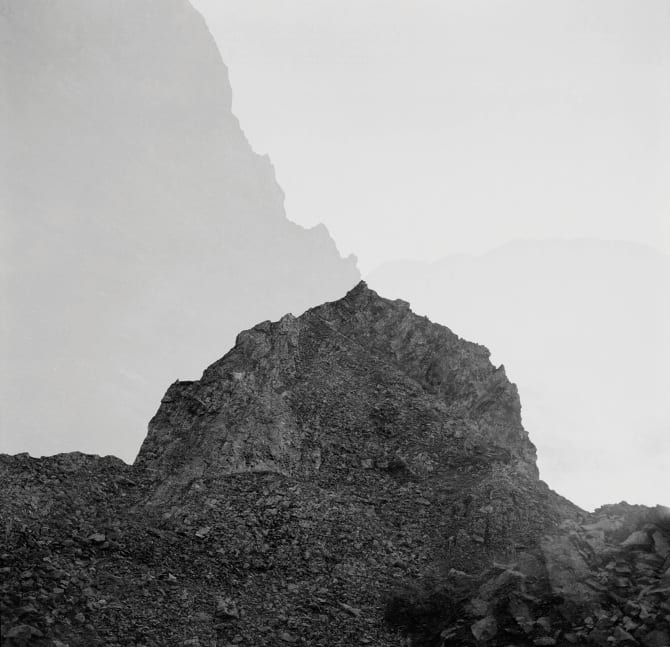
I’m a medium and large format photographer, I work with my own images as well as archival photographs.
The Image
I chose this image as it was something I never planned but summed up my project perfectly; what people like to call a happy accident. My Rolliflex, that had been through one world war, got caught when rolling the film and created a triple exposure, with 3 mountains perfectly meeting at one point.
Why Film?
I shoot on film because I enjoy the slow process – I like to take my time with photography, I don’t churn out images and projects daily like some are able to do. I like to wait for the images to come back to me after a few weeks of taking them, you’re left with less chances to get it right every time you take a shot so you have to focus a lot harder.
I plan my shoots rigorously and have an idea in my head of what I want to photograph and how it will look before I pick up a camera. But film, as I mentioned earlier, can sometimes throw up some interesting twists which can either add something to your work if you embrace it, or diminish it if you don’t accept the lack of control.
Lynda Laird
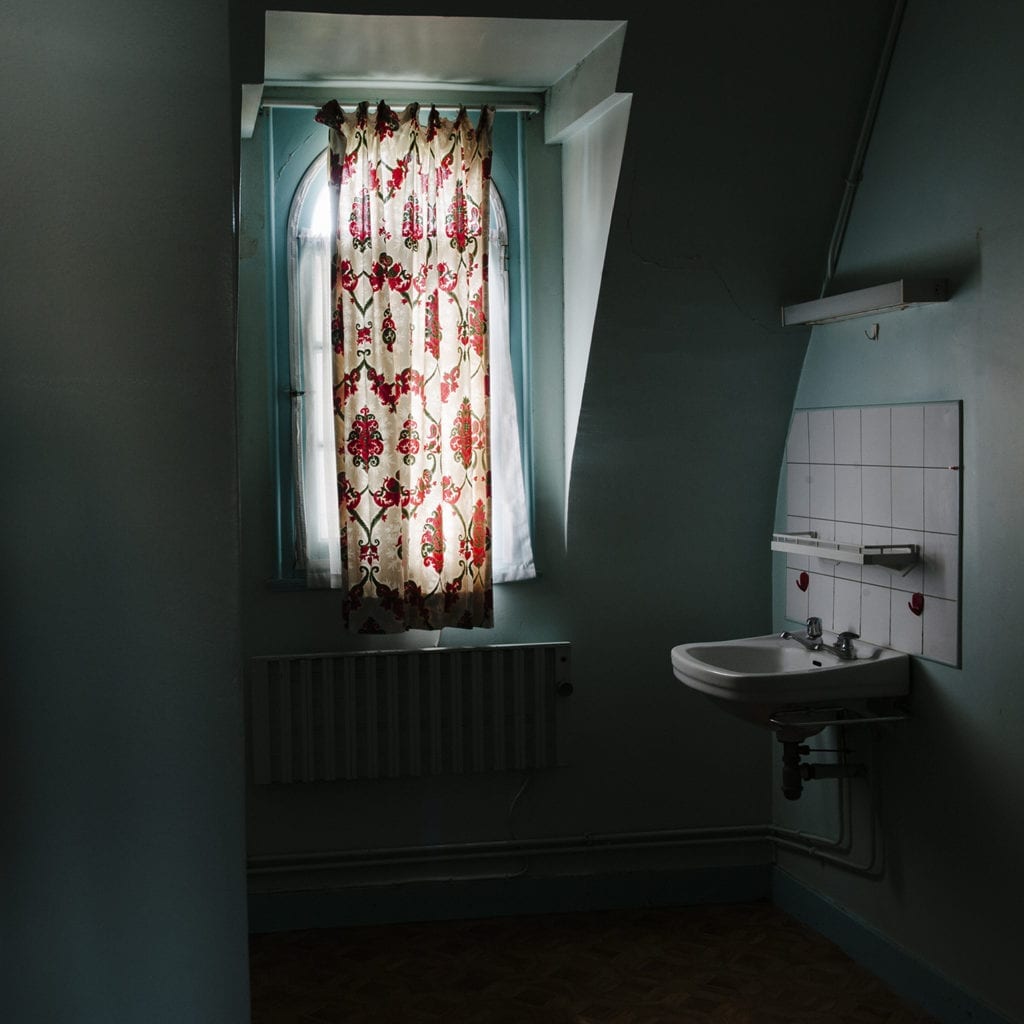
I am a photographer working on long term bodies of work; primarily focusing on landscape and the idea that memory is stored in place, that there are traces and an imprint of history stored in the buildings, landscapes and spaces where specific events have occurred.
The Image
I have chosen this image which is from my most recent body of work. I am not sure if it is really my strongest image, but I feel after spending years trying to figure out what I was doing with photography, it feels right. It is from a series I did on an orphanage that was built to house children of fishermen lost at sea. The building sits empty now, but all the bedrooms remain intact, each one being completely different.
Why Film?
I shoot on film because I like that it makes me slow down, the whole process takes more consideration and thought. With only getting 12 shots per role I really need to think about what I am doing, and I love the sound of the shutter on my Hasselblad!
Everything just feels more magical with film. I photographed the orphanage bedrooms both on film and digital and the film ones were by far my favourite: the colours, textures, tones and shadows just had so much more depth.
I like to combine my images with sound and video too, so I mix things up a bit. For long term personal projects shooting on film is definitely my first choice.
Juliana Kasumu

I am a Nigerian-British photographer, using conscious imagery to highlight and educate on the hidden histories of black women
The Image
This image is one of the most memorable for me, as it represents the beginning of an honest stage in my practice. I feel it is the perfect representation of the personality of my work.
The image is from my series Irun Kiko. I was looking into the pre-colonial history of hair threading within West Africa, specifically Nigeria, and the ways in which women either conform or rebel against typical European beauty standards.
Why Film?
When I began learning about photography, I started on film. There was such an art to the process of it all and I fell in love. Later I moved into digital which eventually took all the passion out of it for me – so now I’ve fully committed to shooting using film 100% of the time
The process of developing the film is an art form, which I view in three parts: production, development and printing. At each stage you have the power to create your images using your own hands – and no image, roll of film, or print will ever be the same as the last. Being able to use my hands and essentially having ultimate control over what is being created is something I just don’t get when shooting on anything other than film.
Stay tuned for the next installment of this series looking at the top young, emerging and established photographers choosing film, coming soon.
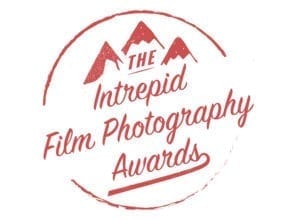
And if you use film yourself, we have launched the Intrepid Film Photography Award!
The Intrepid Film Photography Award will select 3 winners to receive their very own exclusive BJP-engraved limited edition 4×5 camera. Not only that but 50 sheets of film will be provided for each winner to shoot a new body of work, courtesy of Ilford. The three winners will be featured online on the BJP and participate in a showcase based on new work created on the Intrepid Camera, at a full-scale group exhibition in London with production support by Metro Imaging.
This is a quick-fire competition, and you have less than a week left to enter – so submit now!
Sponsored by Intrepid Camera Co.: This feature was made possible with the support of Intrepid Camera Co.. Please click here for more information on sponsored content funding at British Journal of Photography.
